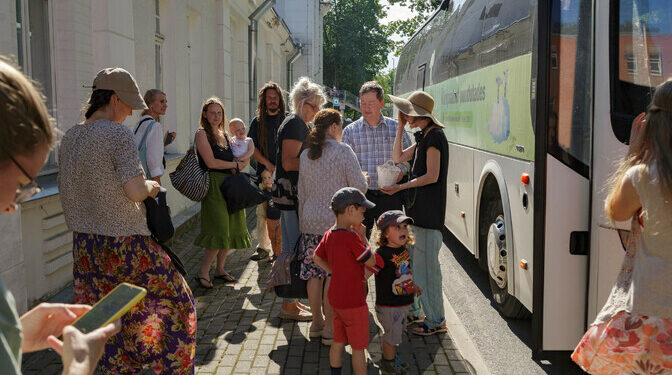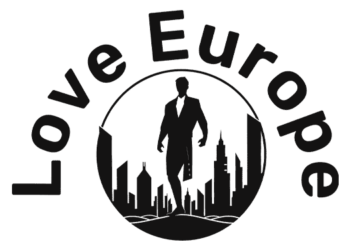After conducting in-depth interviews with each of the participants, the shortest of which was over an hour long, Patrick had such a rich body of material that it was tough to decide what to leave out. “It was then quite a task to choose just a small segment from each speaker,” he says.
In the end, given the personal nature of the stories, it seemed only right to let the participants themselves pick which snippets would end up in Patrick’s exhibition. “But we have a lot more material, for each speaker,” he smiles.
***
One of the storytellers Patrick recorded for his exhibition was Ivy Britzny Osae, who I also meet in Valga. Ivy is from Ghana and the story she chose to share takes her back to her grandmother’s home, where she grew up. It was a busy household, full of family, life and close to nature. While cooking together in the courtyard, Ivy’s grandmother suddenly became quite animated, urgently telling her and her cousins to leave some drinking water by the entrance to their home.
The reason, Ivy explains, was that her grandmother had noticed the distinctive smell made by a specific type of ant native to Ghana when it’s crushed. “These particular ants are quite different because they are quite big. I haven’t really encountered them again since I left my home,” Ivy says. The reason Ivy’s grandmother reacted that way was her belief that the smell of those crushed ants was a sign their ancestors were passing by, she says, and they needed water to give them strength for their long journey through the afterlife.
“I think it happened when I was a kid and well, you know when you’re a kid some of the things that happen, you don’t really believe as such,” Ivy says. “That ant was just a normal thing that ended up being something so significant to my grandmom,” she continues. “I know it’s just a story but it’s kept me going, knowing that we have these spirits around.”
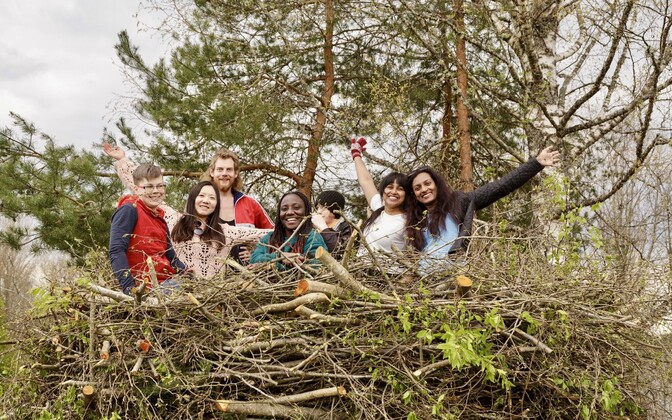 Ivy Britzny Osae (Center) contributed a story from her native Ghana to the “Route Diverse” project. Source: Route Diverse
Ivy Britzny Osae (Center) contributed a story from her native Ghana to the “Route Diverse” project. Source: Route Diverse
***
The other tales included in the exhibition vary widely in terms of content – from preparing offerings to ward off demonic spirits in Sri Lanka to learning how to stay safe from curses in the San Luis Valley. But, as Ivy is keen to point out: “It was also surprising to see, that we actually have such similar stories.”
Ivy even noticed parallels between stories she’d heard as a child in Ghana and others she later encountered here in Estonia. “I was fascinated by the Kalev stories because of the symbology of the eggs and snakes,” she tells me. “We have similar stories back home. It just makes me feel that we are connected in one way or the other.”
Patrick, too, was struck by both the extreme differences and, simultaneously, remarkable commonalities in the stories people shared for the exhibition. “Maybe not in [terms of the] details but in the overarching themes and concerns and ways of dealing with the situations,” he says. “To see how human nature and our relationship with the unknown is shared throughout cultures and in their different stories – that’s one of the overarching themes of the entire piece.”
When it comes to issues of the spiritual and then unknown, it’s perhaps easy to be cynical. After all, Estonia is also frequently said to be one of Europe’s least religious countries. So what is it about these kinds of tales that seem to transcend national and cultural boundaries?
“A lot of the people who share these stories and who maybe even live by certain tenets of these stories don’t necessarily really believe them,” Patrick says. “But there’s an attitude of, well, why not – better safe than sorry, you know. Let’s not tempt fate. “They’re the unwritten laws, the rules that you don’t really believe the background for but they’re so ingrained in society and in culture. It’s really fascinating.”
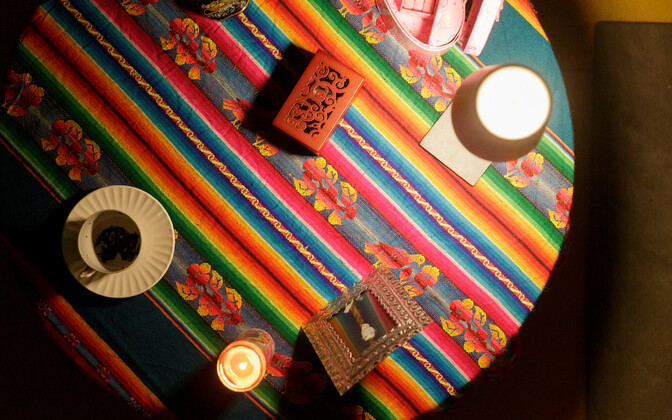 The Route Diverse art tour. Summer 2024. Source: Danel Rinaldo
The Route Diverse art tour. Summer 2024. Source: Danel Rinaldo
“Most of these things also build up our value systems,” Ivy adds. “How we see life or approach life and people, wherever we find ourselves.” From an early age, she says, there were a lot of “do nots” – “‘don’t do this,’ ‘don’t do that,'” she smiles. “Because if you do this something is going to happen to you or something is going to happen to someone. But after growing up I realized that those things are said to protect you and the environment.”
In Ivy’s culture, spirits were treated with an especially high level of respect. “(People) would make things spiritual, so you would be more afraid and because everybody’s scared of witches – everybody’s scared of the unknown. So then you’ll stay more on a straight path,” she says. “Because you never know which thunder is going to strike you the next time. Yeah,” she laughs.
***
I’m not sure exactly what I expected to find when I came out here to the South Estonian periphery but I’ve certainly seen a different side of the “arts of survival” theme that frames Tartu’s year as European Capital of Culture. The “Route Diverse” project, too, has certainly taken plenty of unexpected turns along the way to get to this point.
“We didn’t start out by collecting these stories per se,” Nastja says. The initial goal was just “a desire actually to bring people to touch with each other,” she says. “It [also] came from the wish to show that Southern Estonia is multicultural because it’s often overlooked,” she adds.
“For me, it was really interesting to see how universal some beliefs are, and that they can manifest themselves in such very different ways. It’s just so enriching to know that this exists.”
Plus, she adds, “Isn’t this one thing that is said to be very special, that humans as a species just do? Thinking about what else is there, what was there before, and what will be there after? It’s something very innate, for humans to just wonder what there might be and how it all works after death.”
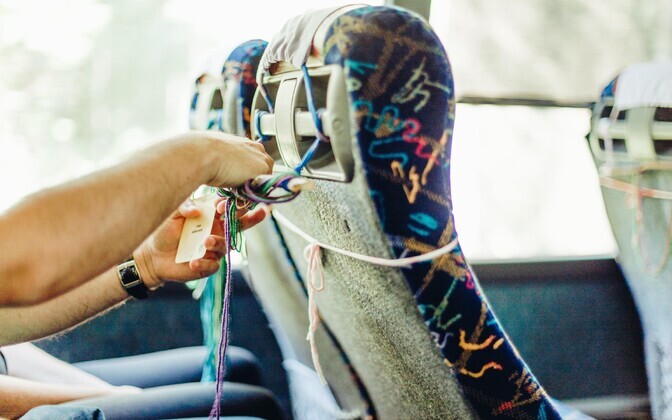 The Route Diverse art tour. Summer 2024. Source: Ruudu Rahumaru
The Route Diverse art tour. Summer 2024. Source: Ruudu Rahumaru
As the sun sets over Valga Train Station, it’s hard not to wonder what the future might hold for small places like this now that Tartu 2024 is coming to an end. Will the connections made during projects like “Route Diverse” between seemingly distant cultures continue to flourish, or will people continue living side-by-side without feeling they need to come together? That also appears to be something of a step into the unknown.
“The reception [for these multi-cultural events] has been great, very warm,” Nastja told Estonian media outlet Delfi back in 2022.
“People have been mutually very curious. On one hand, those living in a small place have not had a chance to meet and talk to someone from, say, Sri Lanka. And on the other hand, those who live in a bigger Southern Estonian city like Tartu have given feedback that they encounter an utterly different kind of Estonia when they visit a smaller place.”
“You know, in terms of the larger picture, the whole of Southern Estonia is the periphery,” Nastja tells me.
“But the idea of the periphery having something that the central parts don’t have and where those edges are where we meet and can see, what there is on the other side.,” she smiles. “Well, that was something really interesting to explore.”
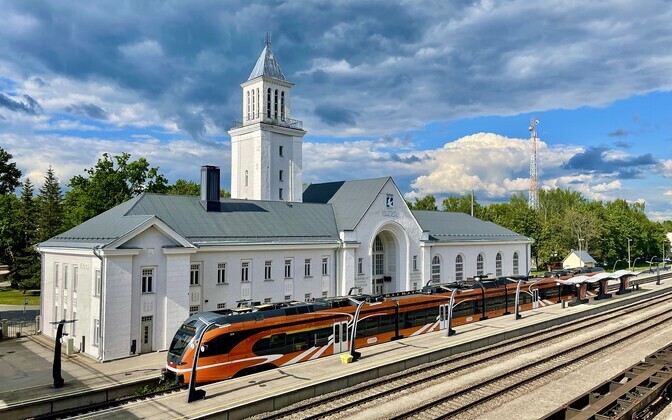 Valga train station, at the border of Estonia of Latvia. Source: Helen Wright/ ERR
Valga train station, at the border of Estonia of Latvia. Source: Helen Wright/ ERR
***
More information about “Route Diverse” is available here. All the stories shared as part of Patrick’s exhibition in Hargla, including Ivy’s can be found here.
—
Follow ERR News on Facebook and Twitter and never miss an update!
Source link : http://www.bing.com/news/apiclick.aspx?ref=FexRss&aid=&tid=6720c16298ea4156ba7d5d6ea229b912&url=https%3A%2F%2Fnews.err.ee%2F1609503580%2Ftartu-2024-feature-taking-a-step-into-the-unknown-along-the-route-diverse&c=10827911480873436972&mkt=de-de
Author :
Publish date : 2024-10-29 02:55:00
Copyright for syndicated content belongs to the linked Source.

